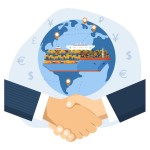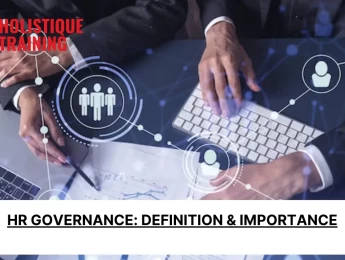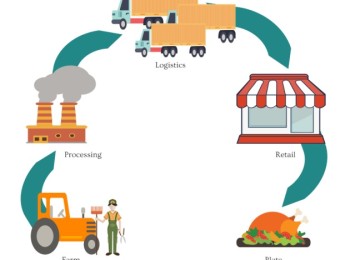- Table of Contents
- The Evolution of Maritime Transport: A Journey Through Time
- Navigating the Digital Seas: The Imperative of Technological Integration
- AI Sets Sail: Revolutionising the Shipping Landscape
- Embarking on the AI Journey: Implementing AI in Your Shipping Company
- Navigating Risks: Challenges in the AI-Driven Shipping Industry
- Charting a New Course: A Future Enriched by AI
The vast expanse of the world's oceans has always captivated human imagination, serving as a conduit for exploration, trade, and connection between distant lands. The history of maritime transport dates back to ancient times, when the earliest seafarers navigated the open waters using rudimentary tools and a keen understanding of celestial bodies. Fast forward to the present day, and the shipping industry has evolved into a sophisticated network of vessels, ports, and logistics that play a crucial role in global commerce. However, this industry is no stranger to change, and as the world hurtles into the digital age, the integration of Artificial Intelligence (AI) is proving to be a game-changer. In this article, we will delve into the history of maritime transport, discuss the significance of embracing technology in the shipping industry, explore the transformative influence of AI, and provide insights on how shipping companies can embark on the AI journey.
The Evolution of Maritime Transport: A Journey Through Time
Long before the advent of modern shipping, humanity's reliance on waterways for transportation and trade was evident in the construction of primitive rafts and canoes. These humble beginnings gradually evolved, culminating in the construction of more complex vessels capable of navigating across oceans. Ancient civilizations like the Phoenicians and Greeks established maritime trade routes that stretched across the Mediterranean, laying the foundation for the global trading networks that exist today.
With the emergence of the Industrial Revolution, steam-powered ships replaced wind-driven vessels, revolutionising the speed and efficiency of maritime transport. This pivotal moment in history marked the transition from sails to steam, making it possible to traverse longer distances in shorter time frames. As the 20th century unfolded, innovations like containerisation and standardised shipping practices further streamlined the industry, allowing for the seamless movement of goods between continents.
Navigating the Digital Seas: The Imperative of Technological Integration
In a world where technology shapes industries rapidly, the shipping sector stands at a transformative juncture. Integrating technology isn't just an option; it's a necessity for managing complex operations, logistics, and coordination in modern maritime transport. Here's why technological integration matters and how it influences key aspects of the industry:
Supply Chain Efficiency
Modern shipping operates within intricate supply chains that span the globe. The integration of technology, particularly through blockchain solutions, is instrumental in synchronising the various components of these supply chains. Blockchain, with its decentralised and transparent ledger system, expedites processes by ensuring real-time visibility into the movement of goods. This not only reduces administrative burdens but also enhances overall supply chain efficiency, allowing for smoother coordination among suppliers, ports, warehouses, and distributors.
Real-time Tracking
In an era where instant information has become the norm, customer expectations for real-time shipment tracking are higher than ever. GPS-enabled systems play a pivotal role in meeting these expectations. These systems enable stakeholders to pinpoint the exact location of cargo at any given moment, empowering them to make informed decisions and provide accurate delivery estimates. Real-time tracking enhances customer satisfaction by providing transparency and visibility throughout the shipping process.
Data-driven Decision Making
Amid the uncertainties inherent in maritime operations, technology emerges as a beacon guiding decision-making processes. Artificial Intelligence (AI) algorithms process vast amounts of data, ranging from weather forecasts to fuel consumption patterns, transforming raw data into actionable insights. By harnessing the power of data analytics, shipping companies can make informed decisions regarding route optimisation, predictive maintenance, and fuel efficiency, thereby saving time and resources.
Sustainability and Environmental Impact
Environmental consciousness has become a driving force in the shipping industry. As concerns about carbon footprints and ecological impact grow, technology plays a crucial role in addressing these challenges. Vessels equipped with sensors and AI analysis can optimise fuel efficiency, reduce emissions, and navigate the seas with a heightened awareness of environmental impact. Technological integration, therefore, aligns the shipping industry with global sustainability goals.
Collaboration and Communication
The seamless flow of information and communication among stakeholders is fundamental to the efficiency of maritime operations. Modern tools, integrated with Internet of Things (IoT) devices and cloud platforms, facilitate real-time information exchange. This interconnectedness ensures that all parties involved in shipping operations, from ship crews to port authorities, have access to the most up-to-date information, leading to smoother collaboration and more efficient operations.
In essence, the imperative of technological integration in maritime transport is not merely a response to current challenges but a proactive strategy to propel the industry towards a more efficient, sustainable, and connected future. It represents a paradigm shift from traditional, manual processes to a digital ecosystem where data-driven insights and technological solutions enhance every facet of maritime operations.
As the shipping industry charts its course into uncharted digital waters, the imperative becomes not just about staying afloat but about harnessing the winds of technological progress. Technological integration is the sail catching those winds, propelling the shipping industry towards new horizons of efficiency and innovation. Embracing this imperative ensures that the industry remains not only relevant but also at the forefront of global trade and commerce in the digital age.
AI Sets Sail: Revolutionising the Shipping Landscape
The integration of Artificial Intelligence into the shipping industry is not merely a surface-level transformation; it's a seismic shift that has the potential to reshape the very core of maritime operations. As AI technologies advance, they're unravelling new possibilities and opportunities that were previously confined to the realm of science fiction. Let's dive deeper into some of the ways AI is revolutionising the shipping landscape:
1. Predictive Maintenance: Averting Disasters, Enhancing Efficiency
Imagine a scenario where a critical component of a ship's engine is on the brink of failure. Traditionally, this situation would lead to costly downtime and repairs. Enter AI-driven predictive maintenance. By continuously analysing data from onboard sensors, AI algorithms can detect subtle anomalies and patterns that are imperceptible to human monitoring. This proactive approach allows shipping companies to address potential issues before they escalate into major problems, thereby reducing operational disruptions and saving considerable resources.
Consider a large container ship traversing the treacherous waters of a stormy sea. In the past, unforeseen mechanical failures could leave the vessel stranded or adrift. However, with AI-powered predictive maintenance, onboard systems can monitor engine vibrations, temperature fluctuations, and other performance indicators in real time. If an irregularity is detected, the system alerts the crew, allowing them to take preemptive measures. This not only ensures the safety of the crew and cargo but also optimises the ship's efficiency by preventing unnecessary fuel consumption due to engine inefficiencies.
2. Smart Route Optimisation: Navigating the Seas with Precision
Navigating the vast expanse of the oceans is a complex task that demands a keen understanding of weather patterns, currents, and optimal routes. AI is transforming this process by bringing a level of precision that was previously unattainable. Dynamic route optimisation powered by AI algorithms takes into account a multitude of variables, including weather forecasts, traffic congestion around ports, and fuel consumption data. The result? More efficient routes that save time, fuel costs, and reduce the carbon footprint.
Consider a shipping company operating a fleet of vessels that traverse long-haul routes between continents. Traditionally, route planning was based on historical data and general weather predictions. However, AI-powered route optimisation goes beyond these rudimentary methods. It factors in real-time weather data, vessel performance characteristics, and even sea ice conditions in polar regions. The algorithmic models then generate routes that not only save time and money but also enhance the safety of the voyage by avoiding turbulent weather systems or high-traffic areas.
3. Enhanced Weather Forecasting: Navigating Storms and Calms
Weather conditions play a pivotal role in maritime operations. Adverse weather can lead to delays, cargo damage, and even maritime accidents. AI-driven weather forecasting is changing the game by providing shipping companies with real-time, highly accurate weather predictions.
Imagine a container ship en route to a major port when an unexpected storm begins to brew. In the past, the ship's crew would have had limited time to react, potentially endangering the vessel and its cargo. However, with AI-enhanced weather forecasting, the ship receives up-to-the-minute information about the storm's trajectory, intensity, and estimated time of arrival. Armed with this data, the crew can make informed decisions, such as altering the ship's course to avoid the storm's path or seeking shelter in a nearby port. This not only ensures the safety of the crew and cargo but also prevents potential damage to the vessel.
4. Autonomous Vessels: Pioneering the Future of Maritime Operations
The idea of fully autonomous ships once seemed like a far-fetched concept, but AI is propelling it closer to reality. Autonomous vessels, guided by AI systems, have the potential to revolutionise the shipping industry by significantly reducing the need for human intervention.
Envision a scenario where a fleet of cargo ships operates autonomously, communicating with one another to optimise routes, avoid collisions, and adapt to changing conditions. AI algorithms process data from a multitude of sources, including sensors, radar, and satellite imagery, to make split-second decisions that ensure the safe and efficient passage of each vessel. This level of coordination and responsiveness can lead to higher fuel efficiency, reduced labour costs, and a decrease in human error-related incidents.
Embarking on the AI Journey: Implementing AI in Your Shipping Company
The prospect of integrating AI into a traditional shipping company might seem daunting, but the rewards are well worth the effort. Here's a roadmap to help your company navigate the process:
1- Assessment and Planning
Begin the journey by conducting a thorough assessment of your current operations. Identify areas where AI could bring tangible benefits, such as predictive maintenance, route optimisation, or cargo handling. Pinpointing specific use cases is crucial to streamline the implementation process. Collaborate with key stakeholders and gather insights into the pain points and challenges that AI could address.
2- Data Collection and Analysis
AI thrives on quality data. Ensure that your company's data collection processes are not only robust but also accurate. Invest in systems that can gather data from various sources, including vessel sensors, historical performance records, and external data feeds. Establish data quality assurance protocols to ensure the reliability of the information fed into AI algorithms.
3- Collaboration and Training
Building a capable team is a cornerstone of successful AI integration. Collaborate with data scientists, engineers, and maritime experts to develop AI solutions tailored to your specific needs. Invest in training programs to upskill your existing workforce, ensuring they have the necessary knowledge to interact effectively with AI-powered systems. Fostering a culture of collaboration between technical and operational teams is essential for the seamless adoption of AI technologies.
4- Pilot Projects
Rather than opting for a wholesale transformation, consider piloting AI projects on a smaller scale. This approach allows for testing and refinement before full-scale implementation. Choose specific use cases identified during the assessment phase and implement AI solutions in controlled environments. Monitor the performance of these pilot projects closely, gather feedback, and make iterative improvements based on real-world insights.
5- Integration and Scalability
As successful pilot projects emerge, integrate them into your company's operations. Focus on scalability to ensure that AI solutions can accommodate the growing demands of your business. This involves not only technical considerations but also organisational readiness. Evaluate the scalability of your infrastructure, the adaptability of your workforce, and the potential impact on existing processes.
6- Continuous Learning and Adaptation
The field of AI is dynamic and constantly evolving. Stay updated on the latest advancements, trends, and best practices in AI. Foster a culture of continuous learning within your organisation to ensure that your team remains at the forefront of technological innovation. Regularly reassess your AI strategy in light of new developments, and be prepared to adapt and refine your approach.
7- Monitoring and Evaluation
Implement robust monitoring and evaluation processes to assess the ongoing performance of AI-driven systems. Set key performance indicators (KPIs) aligned with your organisational goals and regularly evaluate the impact of AI on efficiency, safety, and other relevant metrics. Use these evaluations to refine AI algorithms, improve processes, and make data-driven decisions to optimise performance continually.
Table 1: Key Performance Indicators for Measuring the Impact of AI
Key Performance Indicator (KPI) | Description |
Operational Efficiency | Measure process speed, cost-effectiveness, and accuracy. |
Environmental Sustainability | Assess reduction in emissions and fuel consumption. |
Safety Enhancement | Monitor incidents, accidents, and crew well-being. |
Cost Reduction | Evaluate savings in maintenance, fuel, and labor costs. |
Customer Satisfaction | Gauge improved delivery accuracy and real-time tracking. |
8- Risk Management
Develop a comprehensive risk management strategy that addresses potential challenges associated with AI integration. This includes cybersecurity risks, data privacy concerns, and ethical considerations. Implement measures to safeguard against cyber threats, ensure data compliance, and uphold ethical standards in AI deployment.
9- Collaboration with Industry Partners
Engage with industry partners, technology providers, and regulatory bodies throughout the AI journey. Collaborative efforts can lead to the establishment of industry standards, the sharing of best practices, and collective problem-solving. Building a network of collaboration fosters a supportive environment for the successful integration of AI into the shipping industry.
10- Adoption of Industry Standards
Stay attuned to emerging industry standards related to AI in maritime operations. Adhering to recognised standards ensures interoperability, compliance with regulations, and compatibility with evolving technologies. It also facilitates smoother collaboration with other industry stakeholders.
By diligently following this roadmap, shipping companies can embark on the AI journey with confidence, maximising the benefits of technological integration while mitigating potential challenges. The roadmap not only guides the initial implementation phase but also emphasises the importance of continuous learning, adaptation, and collaboration to ensure sustained success in the ever-evolving landscape of AI-driven maritime operations.
Navigating Risks: Challenges in the AI-Driven Shipping Industry
While the integration of Artificial Intelligence (AI) into the shipping industry presents a myriad of benefits, it's crucial to acknowledge and address potential risks and challenges that may arise. As the industry sets sail into a future enriched by AI, careful navigation through these challenges becomes paramount.
Cybersecurity Concerns
The increased reliance on AI introduces a new frontier of cybersecurity risks. Autonomous vessels and interconnected systems are susceptible to cyber threats, ranging from hacking attempts to data breaches. Ensuring robust cybersecurity measures is imperative to safeguard sensitive information and maintain the integrity of AI-driven operations.
Human-Technology Interface
As the industry moves towards autonomous vessels, establishing a seamless interface between AI systems and human operators becomes a critical challenge. Ensuring effective communication and understanding between AI algorithms and human crew members is essential to prevent misunderstandings and potential safety hazards.
Data Accuracy and Bias
AI algorithms heavily depend on the quality and accuracy of data. Inaccurate or biassed data can lead to flawed decision-making, affecting route optimisation, weather forecasting, and predictive maintenance. Rigorous data quality assurance processes are essential to mitigate these risks and ensure the reliability of AI-driven insights.
Regulatory Compliance
The maritime industry operates within a framework of stringent regulations. Implementing AI solutions requires adherence to existing maritime laws and the development of new regulations to address the unique challenges posed by AI-driven vessels. Navigating the complex landscape of legal compliance while embracing technological advancements is a delicate balance that requires industry-wide collaboration.
Over-Reliance and Loss of Human Expertise
The allure of AI's efficiency may lead to over-reliance on automated systems, potentially diminishing the role of experienced human operators. The loss of human expertise in critical decision-making processes could pose challenges during unforeseen circumstances or in scenarios that require nuanced judgement beyond the capabilities of AI.
Initial Investment and Training Costs
Integrating AI into maritime operations involves significant upfront investments in technology, infrastructure, and workforce training. Shipping companies need to carefully balance these costs against the expected benefits, considering the potential financial strain during the initial phases of AI implementation.
Environmental Impact of AI Manufacturing
The production and disposal of AI hardware components contribute to environmental concerns. Manufacturing AI technology involves resource-intensive processes, and the disposal of outdated equipment poses challenges in terms of electronic waste. Striking a balance between technological advancement and environmental sustainability becomes crucial.
Ethical Considerations
The deployment of AI in the shipping industry raises ethical questions related to transparency, accountability, and decision-making processes. Ensuring that AI algorithms operate ethically and align with societal values requires ongoing scrutiny and adherence to ethical guidelines.
Addressing these risks requires a proactive and collaborative approach from industry stakeholders, regulatory bodies, and technology developers. It's essential to implement robust risk management strategies, invest in ongoing cybersecurity measures, and foster a culture of continuous improvement and adaptation.
In short, while AI heralds a transformative era for the shipping industry, recognising and mitigating potential risks is fundamental to ensuring a safe, efficient, and sustainable future. By navigating these challenges with diligence and foresight, the industry can harness the full potential of AI while safeguarding against unforeseen pitfalls.
Charting a New Course: A Future Enriched by AI
In the ever-evolving seascape of the shipping industry, technological integration has become the North Star guiding maritime operations toward unprecedented efficiency and sustainability. As we've explored the transformative impact of AI in revolutionising aspects like predictive maintenance, route optimisation, and weather forecasting, the importance of embracing technology becomes clear. The horizon holds promises of smoother operations, enhanced safety, and reduced environmental impact—all driven by the power of technology.
For those who wish to navigate this transformative landscape with expertise and confidence, our course on Intermodal Freight Transportation offers a comprehensive guide. In an era where transporting goods across borders is essential for economic growth, understanding the intricacies of international freight is paramount. Our course dives deep into the responsibilities, regulations, and best practices that freight transportation companies must master to ensure the secure and efficient transportation of goods across oceans.
In a world where health, safety, and legal compliance are paramount, our course equips you with the knowledge to prevent accidents, navigate regulations, and recover effectively from incidents. From understanding the legal documentation needed for international transport to training your drivers and distribution staff in safety protocols, our course provides the tools necessary to ensure the well-being of your team, the security of your cargo, and the success of your operations. Just as ships rely on skilled navigators to traverse uncharted waters, your business can benefit from the expertise gained in our Intermodal Freight Transportation course, ensuring a voyage of success in the complex world of modern shipping.
























